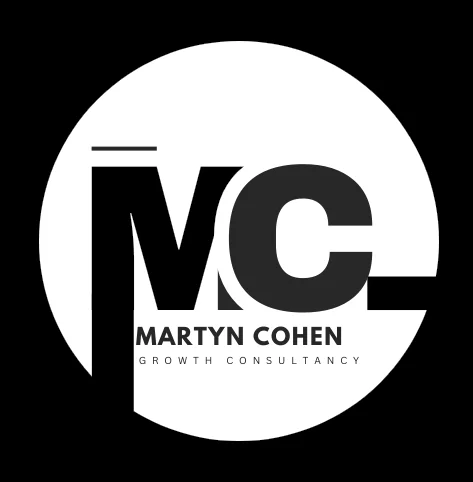Maximising your sales team's performance means more than enthusiasm and targets. It requires clear goals, consistent support, the right approach to leadership, empowerment, ongoing conversations, swift resolution of issues, and mutual accountability.
1. Set Clear, SMART Objectives
Performance always starts with clarity. Use SMART objectives to give your team direction and purpose. Make each element stand out for maximum impact:
SMART Breakdown
Specific:
Clearly define what you want to achieve.
Example: Rather than saying "increase sales," specify "acquire 10 new clients from the technology sector."
Importance: Specific goals eliminate confusion and help people focus on priority actions.
Measurable:
Include numbers or criteria so progress can be tracked.
Example: "Increase weekly sales calls from 30 to 45."
Importance: What gets measured gets managed - people know exactly how they're doing.
Achievable:
Ensure the objective is realistic given current resources and constraints.
Example: "Grow revenue by 8% this quarter," not "double the business overnight."
Importance: Achievable goals keep colleagues motivated and prevent frustration.
Relevant:
Connect each goal to wider business priorities and individual roles.
Example: "Upsell an additional service to all top-20 accounts," which ties directly to team targets.
Importance: Relevant goals help colleagues see the value in what they're doing and how it serves the bigger picture.
Time-bound:
State deadlines or time frames.
Example: "Complete product training course by the end of August."
Importance: Deadlines create urgency and help prioritise daily actions.
Key Principle:
Involve your colleagues in setting goals, so they are invested and more motivated to achieve them.
2. Communicate and Support for Success
Clear and ongoing communication makes expectations and pathways to success visible for everyone. Share what best practices look like, keep colleagues well-informed with regular updates, and ensure open channels for questions and feedback. Listening actively during meetings empowers everyone to share challenges or solutions. Never leave people uncertain about what matters or how to get there.
3. Use the Right Leadership Approach – Situational Leadership (SLII Model)
A great manager adapts their leadership style based on the colleague's skill level and motivation for a specific task. The SLII (Situational Leadership II) model describes four leadership styles and four corresponding development levels. Here's how to put it in practice:
Directing (S1)
Use when a colleague is new to a task and needs clear instructions. You tell them exactly what to do, monitor progress closely, and set clear boundaries.
Example language:
"Here's how you complete this process. Let's walk through it together step by step."
Coaching (S2)
When a colleague shows some competence but lacks confidence or may face new challenges, you still provide detailed guidance but increase encouragement, ask for input, and explain decisions.
Example language:
"Here's what needs doing and why it matters. What questions do you have? How do you think you might tackle this?"
Supporting (S3)
With experienced colleagues who are capable but may need reassurance, you step back on instructions and focus on facilitating. Encourage them to problem-solve and share their ideas.
Example language:
"You've handled this before. What approach do you think works best here? I'm here for advice or as a sounding board when you need."
Delegating (S4)
With highly competent and motivated colleagues, trust them with the outcome and involve them in decision-making. You check in periodically and provide resources, but let them self-manage.
Example language:
"You know what needs to be achieved. Let me know what support you need, and keep me posted on progress."
Key Principle: Flexibility
Adapt your leadership style based on each colleague's skill level and motivation for the specific task
4. Empower Your Team to Drive Engagement
Allowing colleagues autonomy and choice boosts commitment and motivation. Encourage them to make decisions, test new ideas, and learn from outcomes. Pair this with clear guardrails and a safety net of support, building trust and creativity along the way.
5. Hold Regular Performance Conversations (Coaching Format)
Consistent, open conversations about performance matter much more than any annual review. Use a coaching style where colleagues reflect on their progress, identify their own goals, and work with you on action plans. Proven frameworks like GROW (Goal, Reality, Options, Will) make these talks practical and empowering.
6. Address Performance Issues Quickly
Tackle problems as soon as they surface. Use evidence and clear expectations to discuss the issue and set a short-term improvement plan. Provide coaching, remove barriers, and document actions for clarity and protection of all parties.
7. Document for Clarity and Accountability
Written records of objectives, plans, feedback, and progress give everyone a shared understanding and guarantee accountability. Documentation supports professional development, ensures fairness, and helps both colleagues and managers track commitments and achievements.
Conclusion
Sales performance flourishes in teams with clear goals, great communication, adaptive leadership, empowerment, regular coaching, proactive issue management, and strong accountability. Put these principles at the heart of your approach to build a culture of growth, ownership, and success for every colleague.
